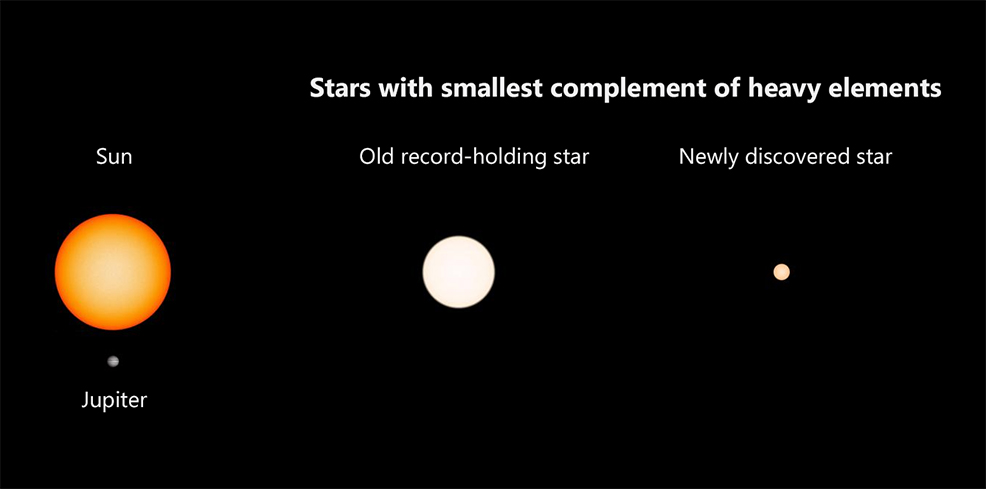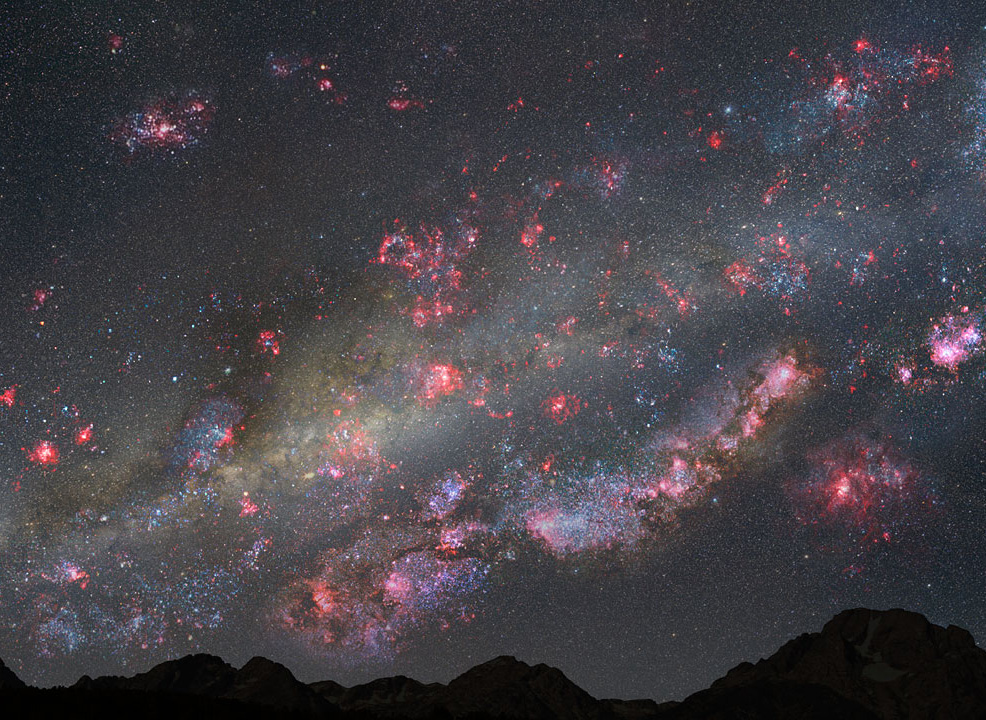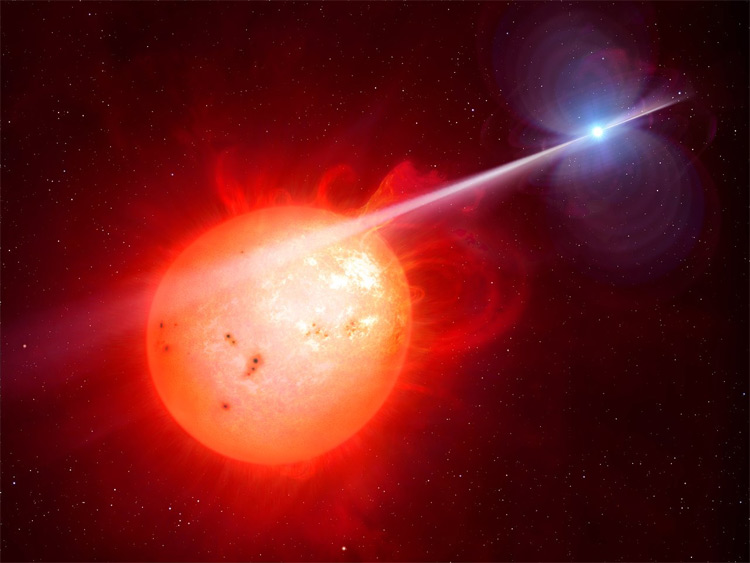
7th November 2018 Ancient star suggests Milky Way is older than thought Astronomers report the discovery of a tiny "ultra metal-poor" star – possibly one of the very first stars – consisting almost entirely of materials released from the Big Bang. Its location in the Milky Way suggests that our galaxy may be three billion years older than previously thought.
Astronomers at Johns Hopkins University in Baltimore, Maryland, have found what could be one of the Universe's oldest stars – a body made almost entirely of materials spewed from the explosion of the Big Bang. Its discovery means more stars with very low mass and very low metal content are likely out there – perhaps even some of the Universe's very first stars. Unlike other stars with a very low metal content, it is part of the Milky Way's "thin disk" in which our Sun resides and is only 1,950 light years from Earth; relatively close in galactic terms. Because this star is so ancient – dating back 13.5 billion years, or just 0.3 billion years after the Big Bang – the scientists believe our galactic neighbourhood may be at least three billion years older than previously thought. "This star is maybe one in 10 million," says Kevin Schlaufman, an assistant professor of physics and astronomy and lead author of the study, which is published this week in The Astrophysical Journal. "It tells us something very important about the first generations of stars." The very first stars after the Big Bang would have consisted entirely of elements like hydrogen and helium, along with small amounts of lithium. Those stars then produced heavier elements in their cores, which were seeded throughout the Universe when they exploded as supernovae.
The next generation of stars formed from clouds of material laced with those metals, incorporating them into their makeup. The metal content, or metallicity, of stars in the Universe increased as the cycle of star birth and death continued. The newly discovered star in this study – known as 2MASS J18082002-5104378 B – has extremely low metallicity. This indicates that, were it to be placed in a cosmic family tree, it could be as little as one generation removed from the Big Bang. Indeed, it is the new record holder for the star with the smallest complement of heavy elements, with about the same content as the tiny planet Mercury. By contrast, our Sun is aeons down that line and has a heavy element content equal to 14 Jupiters. As shown in the animation below, the star has a roughly circular orbit that, like our Sun, never gets too far from the plane of the galaxy. However, this is actually quite unusual for an ultra metal-poor star, most of which travel sideways across the galaxy and far from its plane. To date, astronomers have identified 30 of this ancient class of stars with the approximate mass of the Sun. The one Schlaufman and his team found, however, is quite small with only 14% of the Sun's mass.
The star is one of a binary pair, both orbiting around a common point. The team discovered the tiny, almost invisibly faint "secondary" star after another group of astronomers found the larger and much brighter "primary". That other group measured the primary's composition by studying a high-resolution optical spectrum of its light. The presence or absence of dark lines within a star's spectrum can show the elements it contains – such as carbon, oxygen, hydrogen, iron and more. In this case, the data confirmed it had extremely low metallicity. Those astronomers also identified unusual behaviour in the star system that implied the presence of a neutron star or black hole. Schlaufman and his team found that to be incorrect; but in doing so, they discovered the visible star's much smaller companion. They were able to infer its mass by studying the primary star's slight "wobble" as the little star's gravity tugged at it.
As recently as the late 1990s, researchers believed that only massive stars could have formed during the earliest stages of the Universe – and that they could never be observed, because they burn through their fuel and die so quickly. But as computer simulations became more sophisticated, they began to hint that in certain situations, a star from this time period with especially low mass could still exist, even more than 13 billion years after the Big Bang. Unlike huge stars, low-mass ones can live for exceedingly long times. Red dwarf stars, for instance, with a fraction of our Sun's mass, are expected to live for many trillions of years. "This discovery tells us that the very first stars in the Universe didn't have to all be massive stars that died long ago," says Andrew Casey, astrophysicist and study co-author. "These ancient stars could form from very small amounts of material, which means some of those relics from soon after the Big Bang could still exist today. We really need to just keep searching for ancient-looking stars like this system ... These stars are extremely rare ... But with huge amounts of data from ground-based and space-based telescopes, the future looks good: we are closer than ever to understanding how stars formed in the early Universe."
Comments »
If you enjoyed this article, please consider sharing it:
|









